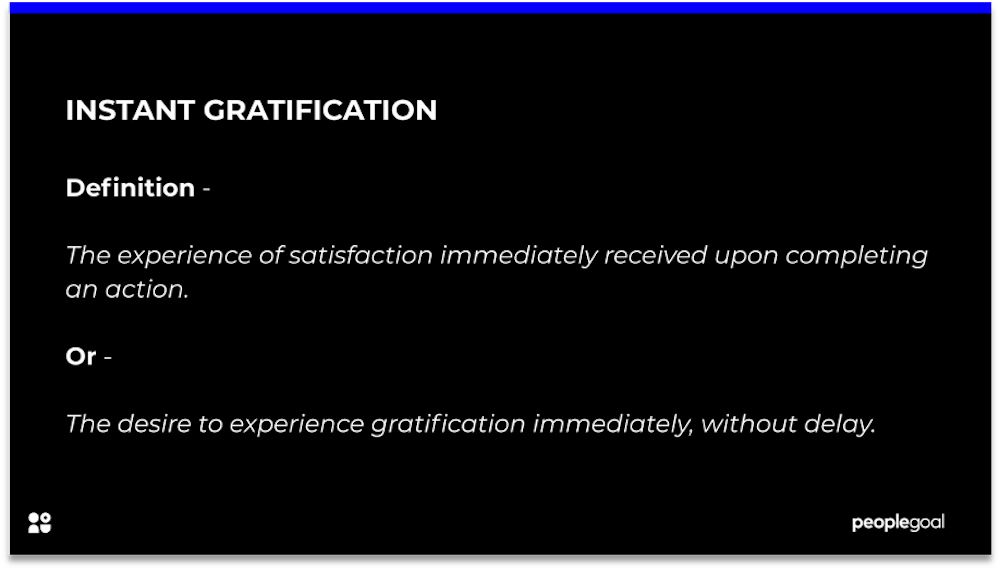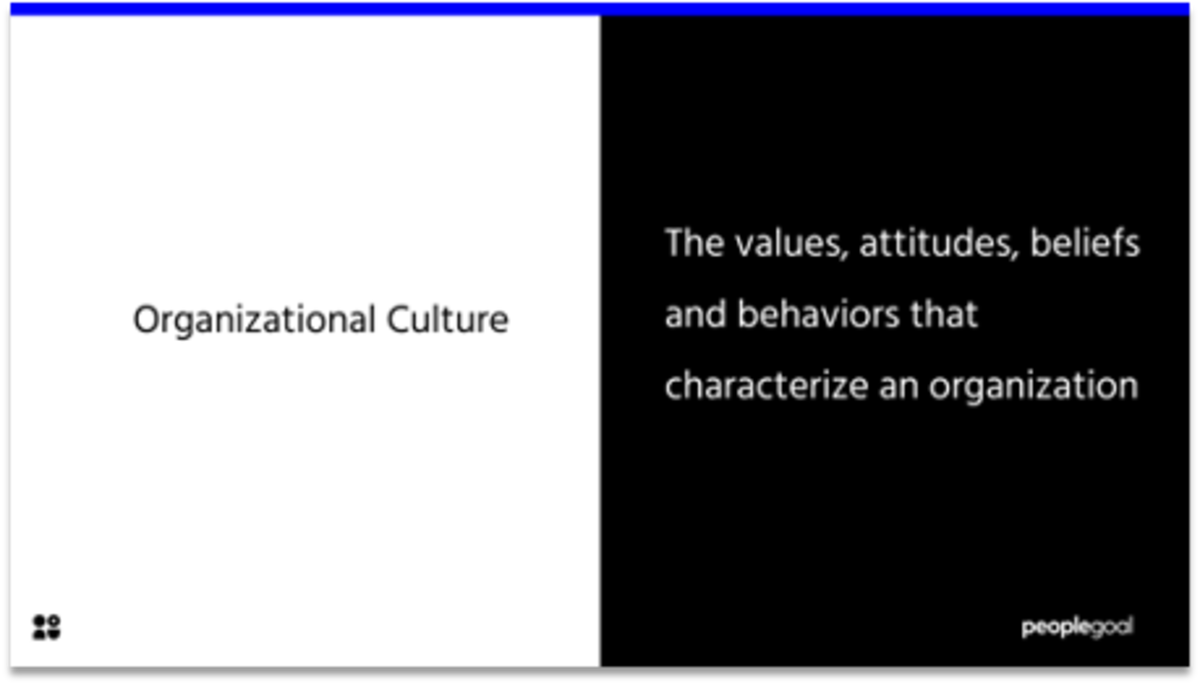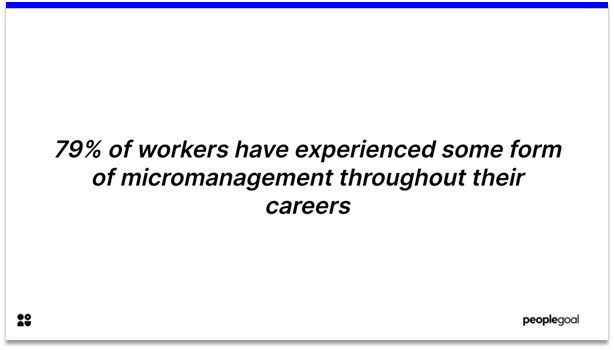Company culture is how the relationships with employees in a company define a brand. It’s how you create the work environment most conducive to growth. Teamwork, a sense of belonging and common purpose are all attributes of a positive work environment. As company websites wax lyrical about their ‘integrity’ or ‘values’, it’s easy to think they’ve got it covered!
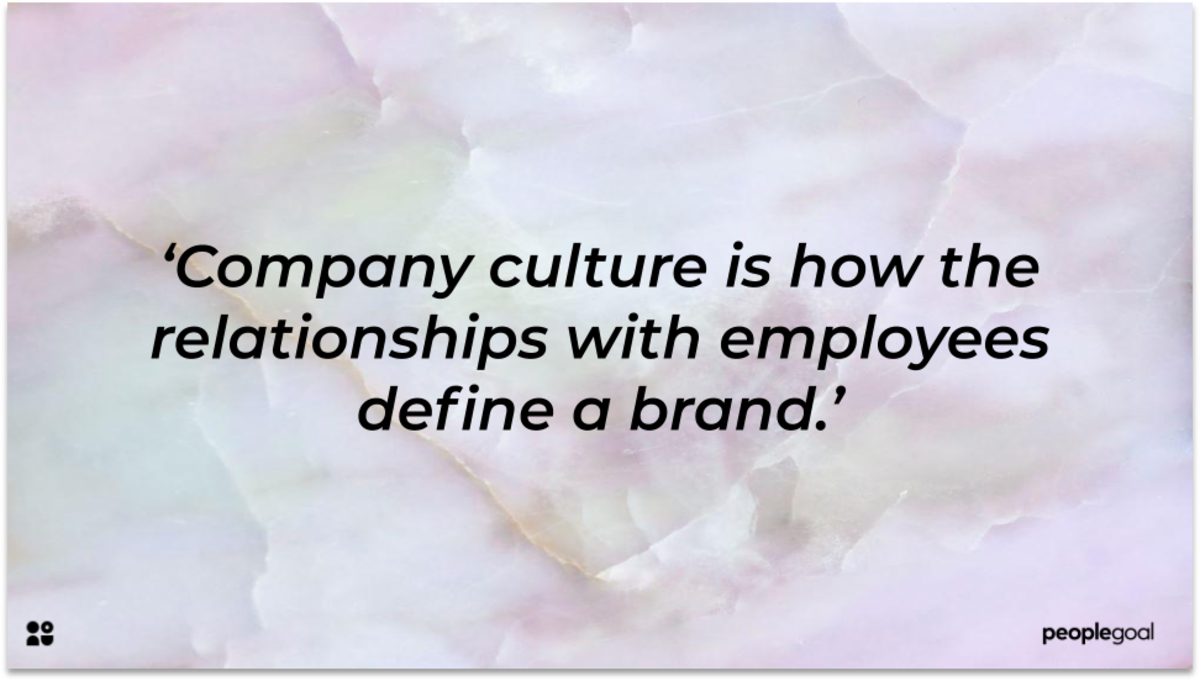
In fact, company culture is easier said than done. Culture is a term so abstract it can be lost in translation. According to Gallup research, only 41% of U.S. employees ‘strongly agree that they know what their organization stands for’. But a company’s guiding principles shouldn’t be ambiguous.
Some managers think culture begins and ends with the brand’s optics. In reality, it isn’t one aspect of a business – but the glue that ties all transactions, relationships and goals together.
So, where to begin when tackling this complex issue? A good starting point is a company culture survey. This can help you gauge awareness of the brand’s values, and the extent to which employee experience matches these values.
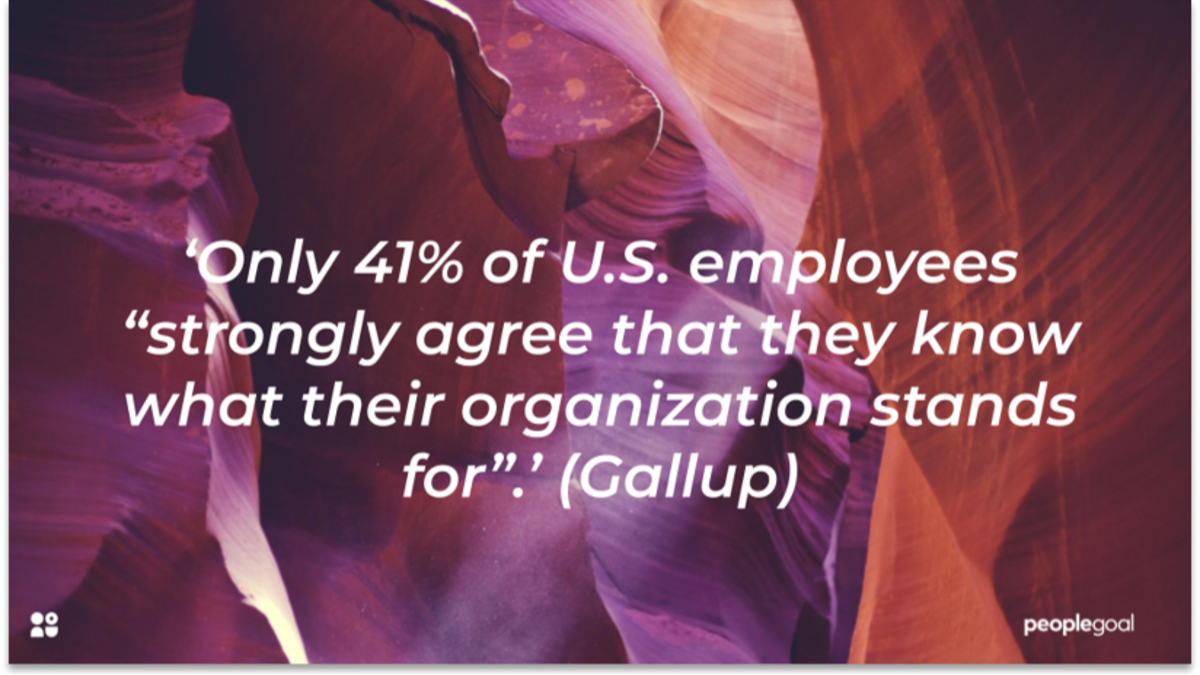
First, here are some golden rules for company culture surveys to get you started. Then, this blogpost will offer its Top 10 company culture survey questions.
Anonymity is key to company culture surveys
Always emphasize that surveys are completely anonymous. Employees need to feel secure that their honesty won’t jeopardize their career prospects.
Beware of timing
Making them occasional means you can track longer as well as shorter-term employee engagement. But make them too rare and you won’t have the benefits of seeing how changes you implement are working. A company culture survey should ideally happen biannually. Think about timing – give employees a chance to reflect and write considered responses. Don’t schedule them around intense deadlines!
Word questions for clear and specific answers
Use a range of different question types. Where possible, encourage employees to write full answers. These provide greater specificity and personalization. But be mindful of time constraints. A Likert scale works to highlight evident problem areas. Be sure to signpost carefully- this blogpost shows you how to use Likert for Agreement, Likelihood and other indicators. Remember- set the next wide and you’re more likely to get a nuanced and accurate picture of how your employees feel.
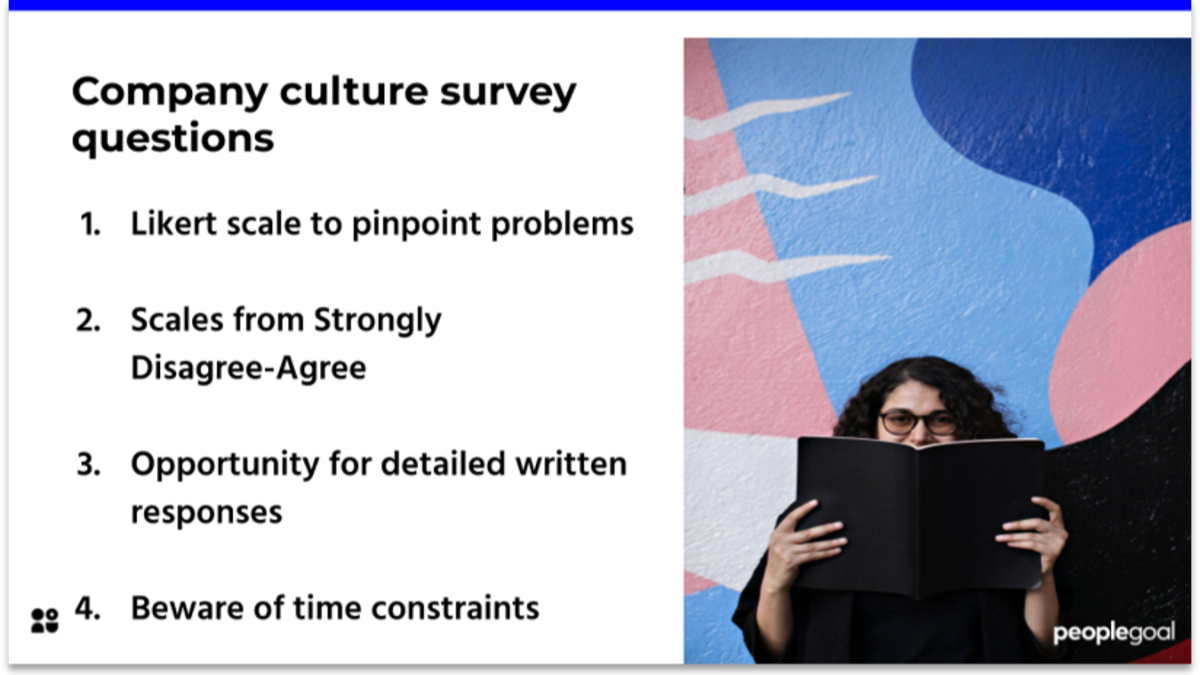
Top 10 Company Culture Survey Questions
1) Our company culture focuses on integrity, teamwork and co-operation.
To what extent do you think these words are relevant to your experience working with us?
It’s important to measure awareness of the company’s values. This can reveal the extent to which you practice what you preach. The question above is just a template. Think about the different themes that make up company culture : every company will be different. If inclusion and development are a priority- put these at the center of your mind as you start your survey.
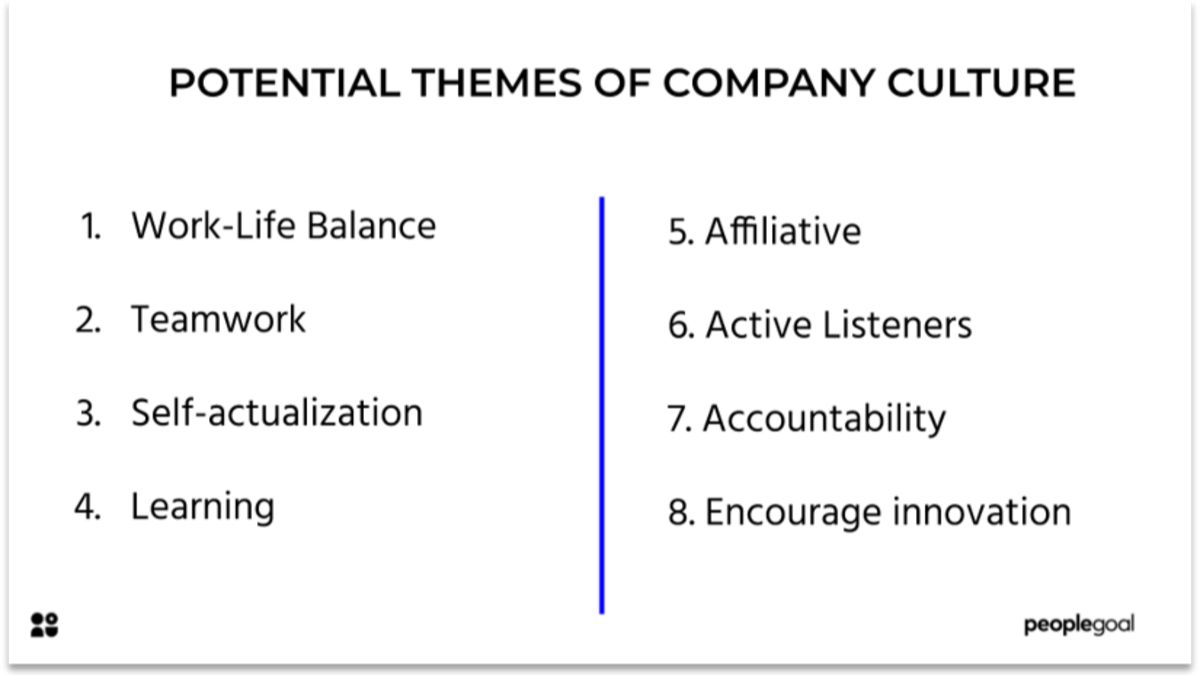
2) ‘I am able to fulfil my role while maintaining a healthy work-life balance’.
Rank from Never to Always
With the move towards home-working, work-life balance can go awry. Ranking this issue in terms of frequency is most revealing – work-life balance will never be perfect, but if employees feel it is compromised too regularly, it becomes a problem. Employee wellbeing is a cornerstone of positive work environments. It’s a cliché that you can’t pour from an empty cup, and your culture should help employees avoid burn-out.
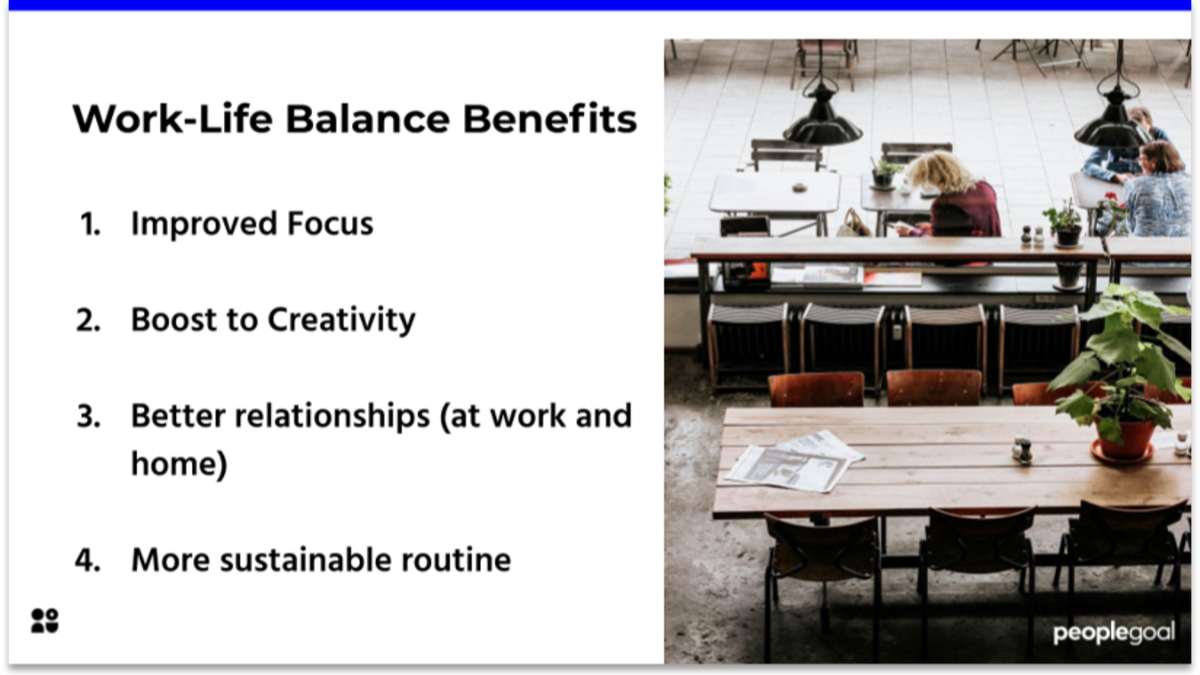
3) ‘I feel listened to in the company and my ideas are regularly implemented’
Rank from Never to Always
This question asks whether or not employees feel they have a voice in the company. Using a scale which measures frequency turns the focus from subjective feelings onto specific events. Every employee feeling heard is essential to a healthy company culture. Managers should be active listeners who recognize good ideas from their team. Remember, if company culture is the ‘glue’ that brings the company together – then connected employees are key.
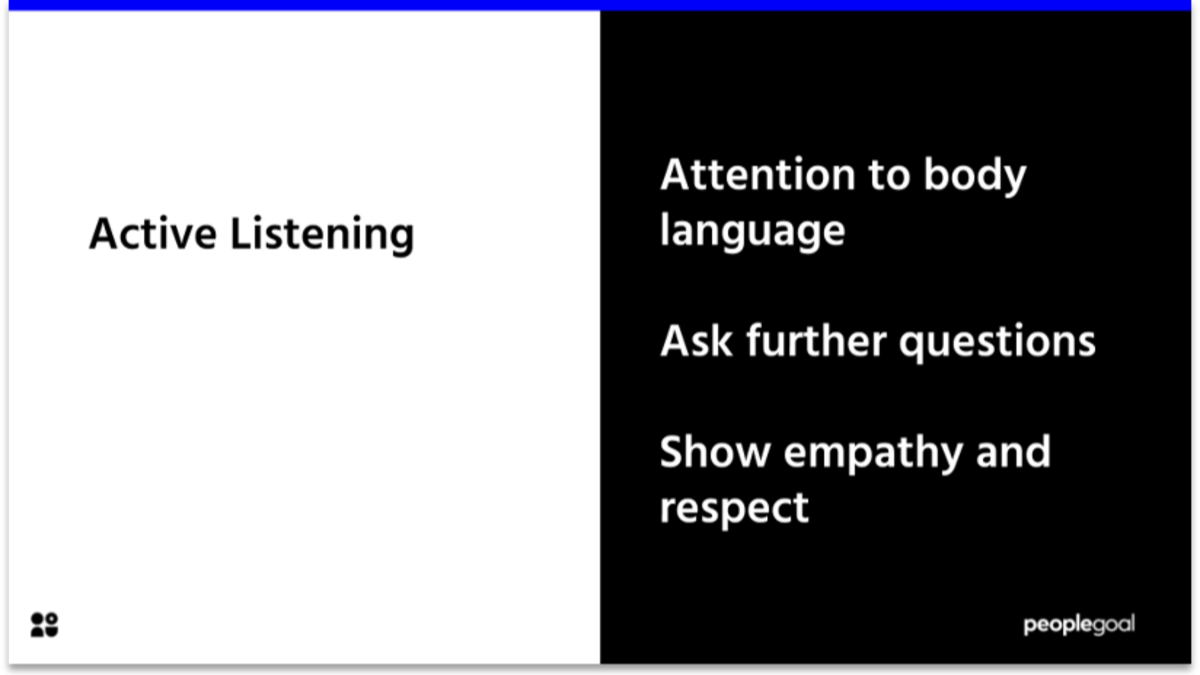
4) ‘The company provides me with opportunities for learning and development that have helped me grow’
Rank from Strongly Disagree to Strongly Agree
There are two aspects to this question : 1) Learning and development tools exist, 2) These help the employee to improve. Even where you think you have the resources to help your teams develop, you need to review how popular and effective these are. You shouldn’t see L&D as separate to company culture – the point of having a culture in the first instance is to have strong teams- and they can only be so strong if they aren’t inspired to make progress.
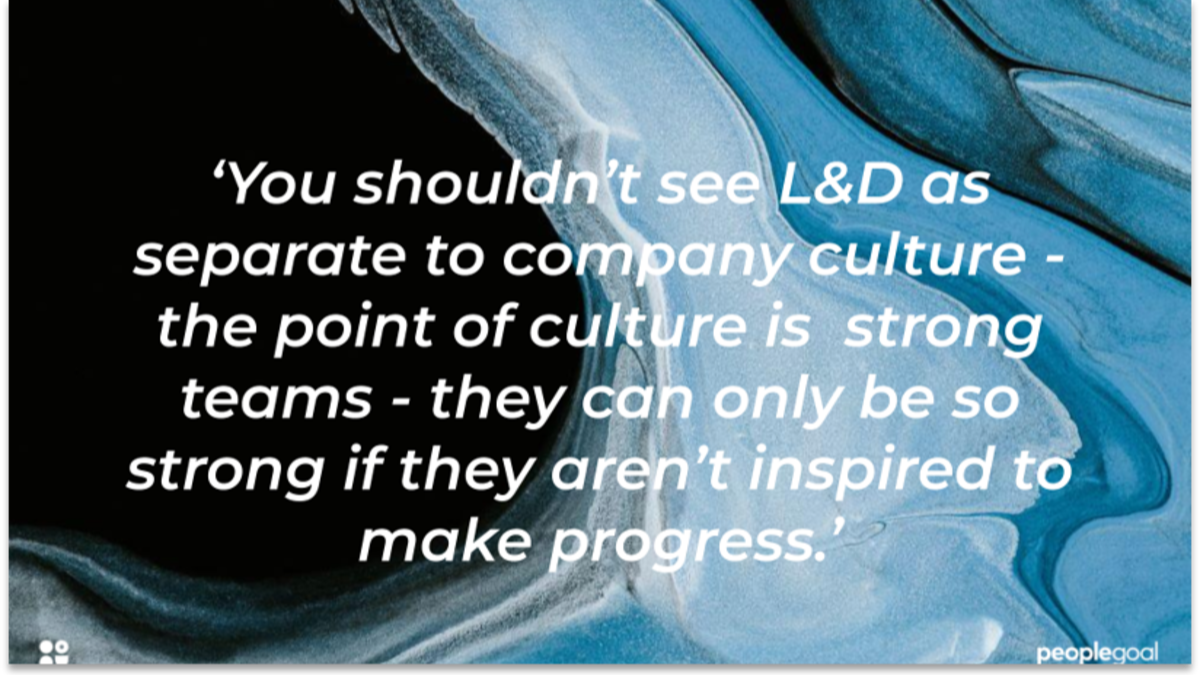
5) What kind of learning resources and opportunities would you like for us to provide in the future?
This fine-tunes what an L&D program will look like. A resilient company culture plays to its employees’ strengths and interests. If staff feel stifled and unable to expand their skill-sets, you can expect a low retention rate. When we learn a new skill, we get a feeling of personal accomplishment that helps motivate us.
Psychologist Abraham Mazlow believed self-actualization or the desire for personal growth drives human motivation. Sometimes we focus overmuch on performance, rather than engagement. Self-actualization leads to greater employee satisfaction. It boosts creativity and innovation – crucial to any positive working environment.
6) ‘I can see myself working at this company in the long-term’
Rank from Very Likely to Very Unlikely
Retention is foundational to a sustainable company culture. Employees who stay longer are more likely to commit themselves to creating a positive culture at work. They are more likely to shape it! If a good proportion of your staff want to stay put- it’s a very good sign that they feel a sense of belonging. It also implies they feel there are progression opportunities available.
A low ranking on this raises red flags – is the issue a lack of development, an overly stressful work environment, conflict? Be sure to use a range of questions to pinpoint the source of this issue.
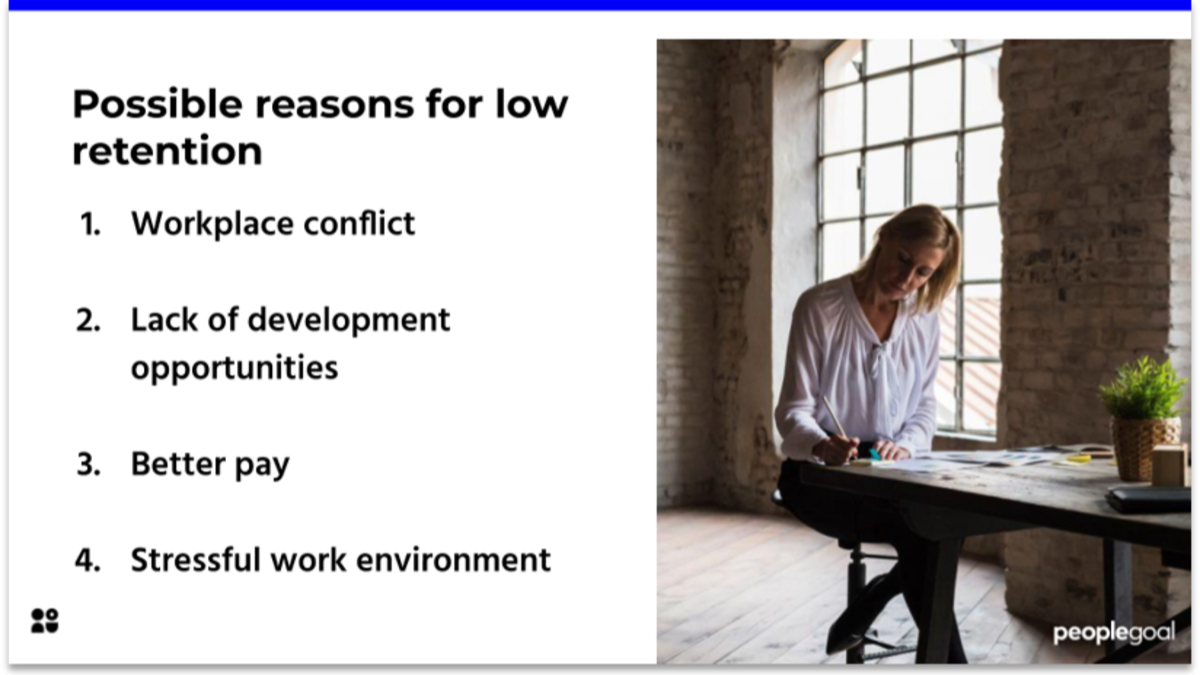
7) ‘The company is true to its values of diversity and inclusion, and employees are treated with equity’
Rank from Strongly Disagree to Strongly Agree
Managers should have a Diversity and Inclusion survey all of its own. In any case, D&I is foundational to a healthy company culture. By asking this question, you show it’s not enough to just express equitable values. Actions speak louder than words, and it’s useful to include a ‘suggestions for improvements’ entry below this question so that you can immediately process some potential solutions.
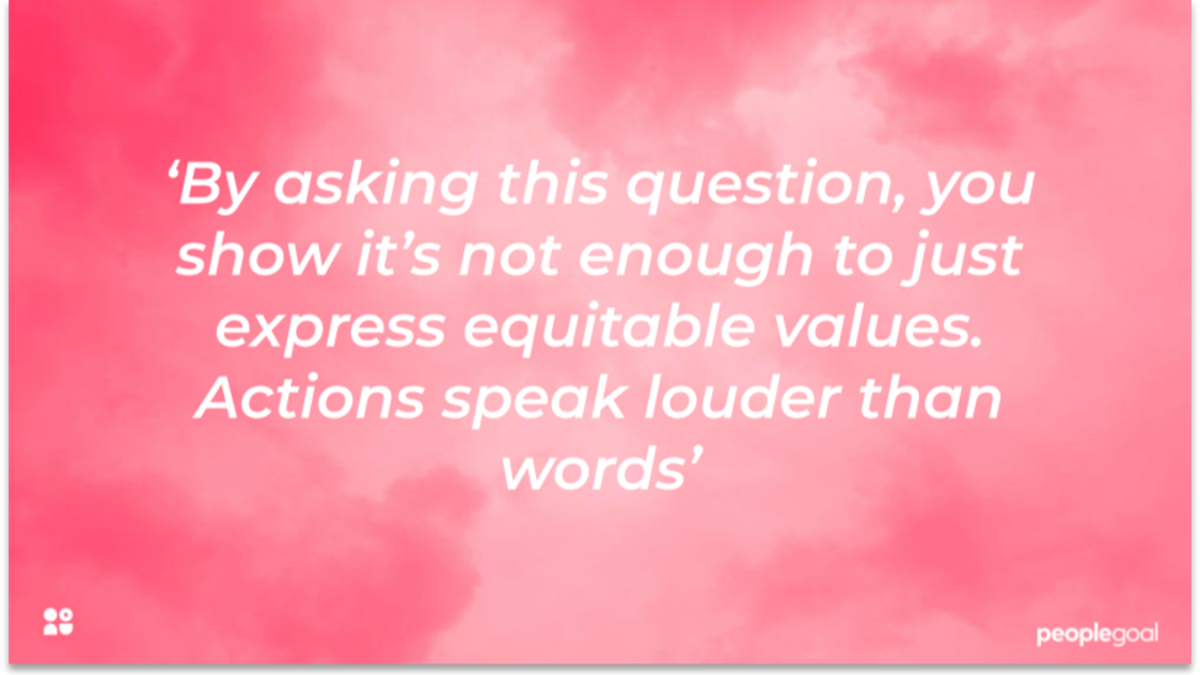
8) ‘Managers provide me with constructive feedback in a way that helps me improve’
Rank from Strongly Disagree to Strongly Agree
Constructive employee feedback works best if it’s timely. Too little, and we lose direction. Too much, and we feel like we’re woefully behind. But open communication creates a more positive outlook to work. Find out what your employees find most helpful and use constructive feedback.

9 ) ‘I feel that my accomplishments are recognized’
Rank from Strongly Disagree to Strongly Agree
Great cultures inspire a positive outlook. Make sure you recognize your employee’s achievements. This can be verbal or through a hand-written note- just ensure it’s personal and specific.
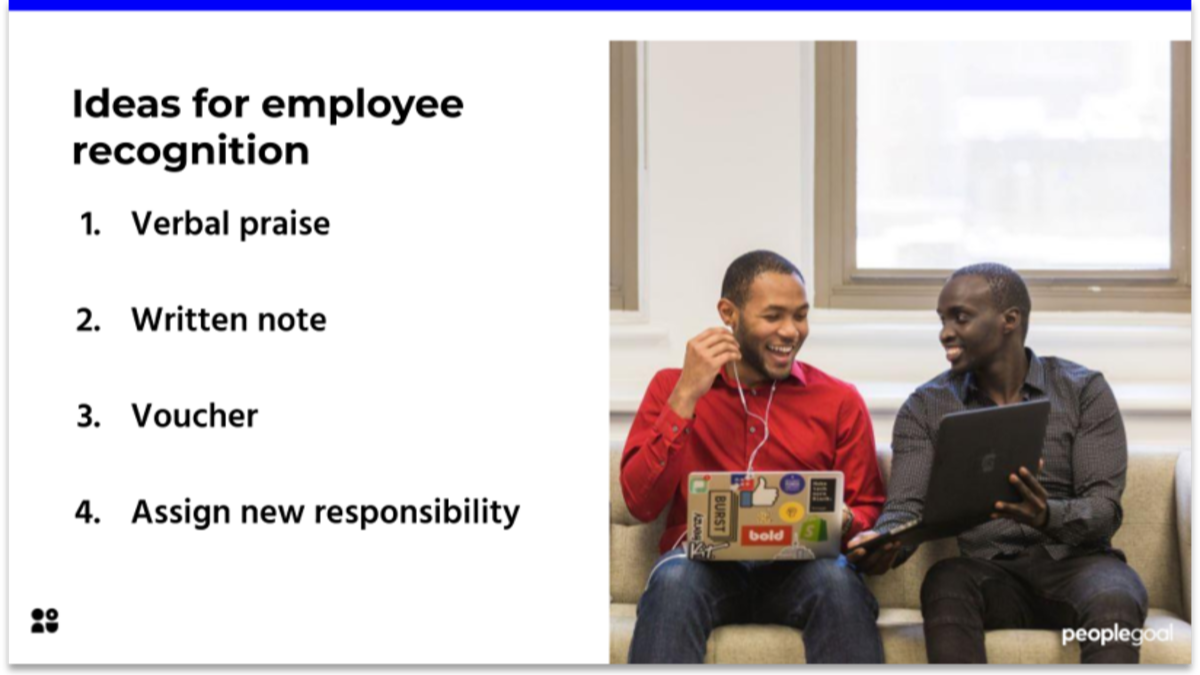
10) ‘I look forward to coming into work day to day’
Rank from Strongly Disagree to Strongly Agree
This simple statement speaks volumes. Work, after all, is work- it can be stressful, it requires commitment and discipline. A positive perspective isn’t always easy to manifest. The right culture helps foster this. When we can work in psychological safety, when we feel inspired by our teams, when our hard work and talents are recognized- that’s when work becomes a happy place to be.
Happiness is sometimes seen as separate from the world of business. Far from it, Gallup’s research suggests 76% of employees suffered from burn-out at least sometimes. If you can rise to the challenge of creating a well-being friendly workplace, you and your employees will benefit from better communication, results, and overall satisfaction.

Company Culture: the takeaway
Company culture is multi-faceted – and your questions should reflect this. The survey is just the beginning. Structure your company culture survey questions so that they give you the information you need. Then use this to make changes until the next survey.
Read PeopleGoal’s Essential Guide to Employee Engagement to make the next steps. The work of creating a supportive, creative company culture never ends. It’s a process that will need constant honing as you learn new things about your company and its employees.
Ready to 3x Your Teams' Performance?
Use the best performance management software to align goals, track progress, and boost employee engagement.


